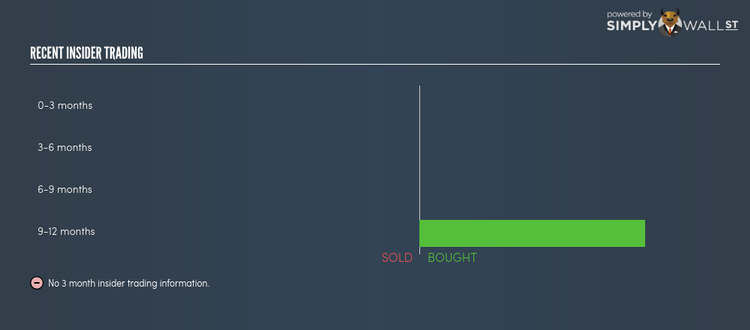Who Are The Largest Shareholders In Asta Funding Inc (NASDAQ:ASFI)?

In this article, I’m going to take a look at Asta Funding Inc’s (NASDAQ:ASFI) latest ownership structure, a non-fundamental factor which is important, but remains a less discussed subject among investors. A company’s ownership structure is often linked to its share performance in both the long- and short-term. Differences in ownership structure of companies can have a profound effect on how management’s incentives are aligned with shareholder returns, which is why we’ll take a moment to analyse ASFI’s shareholder registry.
See our latest analysis for Asta Funding
Institutional Ownership
Institutional investors are one of the largest group of market participants and their buy-sell decisions on a company’s stock can significantly impact prices, more so, when there are relatively small amounts of shares available on the market to trade. With a not-so-big institutional ownership of 9.49%, ASFI is not too exposed to price volatility that may arise from institutional trading. But investors should also check whether hedge funds, mostly active investors with a short-term horizon, have a significant stake. They own 6.04% of ASFI’s outstanding shares, enough to cause a spike in volatility, at least in the short-term. I am going to further examine the stock’s other major shareholders to figure out how they can affect the company’s investment profile for the long-term investor.
Insider Ownership
I find insiders are another important group of stakeholders, who are directly involved in making key decisions related to the use of capital. In essence, insider ownership is more about the alignment of shareholders’ interests with the management. ASFI insiders hold a significant stake of 61.48% in the company. This level of insider ownership has been found to have a negative impact on companies with consistently low PE ratios (underperformers), while it has been positive in the case of high PE ratio firms (outperformers). It’s also interesting to learn what ASFI insiders have been doing with their shareholdings lately. Insiders buying company shares can be a positive indicator of future performance, but a selling decision can simply be driven by personal financial needs.
General Public Ownership
The general public holds a substantial 10.28% stake in ASFI, making it a highly popular stock among retail investors. This size of ownership gives retail investors collective power in deciding on major policy decisions such as executive compensation, appointment of directors and acquisitions of businesses. This level of ownership gives retail investors the power to sway key policy decisions such as board composition, executive compensation, and potential acquisitions. This is a positive sign for an investor who wants to be involved in key decision-making of the company.
Private Company Ownership
Another group of owners that a potential investor in ASFI should consider are private companies, with a stake of 12.71%. While they invest more often due to strategic interests, an investment can also be driven by capital gains through share price appreciation. This kind of ownership, if predominantly strategic, can give these companies a significant power to affect ASFI’s business strategy. Thus, potential investors should look into these business relations and check how it can impact long-term shareholder returns.
Next Steps:
While institutional ownership in ASFI is low, active hedge funds still have a significant stake in the company. The participation of these active investors has been linked to the volatile nature of share prices. An investment in ASFI should come with enough margin of safety in order to avoid significant dips in shareholding value. However, ownership structure should not be the only focus of your research when constructing an investment thesis around ASFI. Rather, you should be looking at fundamental drivers such as Asta Funding’s past track record and financial health. I urge you to complete your research by taking a look at the following:
1. Financial Health: Is ASFI’s operations financially sustainable? Balance sheets can be hard to analyze, which is why we’ve done it for you. Check out our financial health checks here.
2. Past Track Record: Has ASFI been consistently performing well irrespective of the ups and downs in the market? Go into more detail in the past performance analysis and take a look at the free visual representations of ASFI’s historicals for more clarity.
3. Other High-Performing Stocks: Are there other stocks that provide better prospects with proven track records? Explore our free list of these great stocks here.
NB: Figures in this article are calculated using data from the last twelve months, which refer to the 12-month period ending on the last date of the month the financial statement is dated. This may not be consistent with full year annual report figures.
To help readers see pass the short term volatility of the financial market, we aim to bring you a long-term focused research analysis purely driven by fundamental data. Note that our analysis does not factor in the latest price sensitive company announcements.
The author is an independent contributor and at the time of publication had no position in the stocks mentioned.


